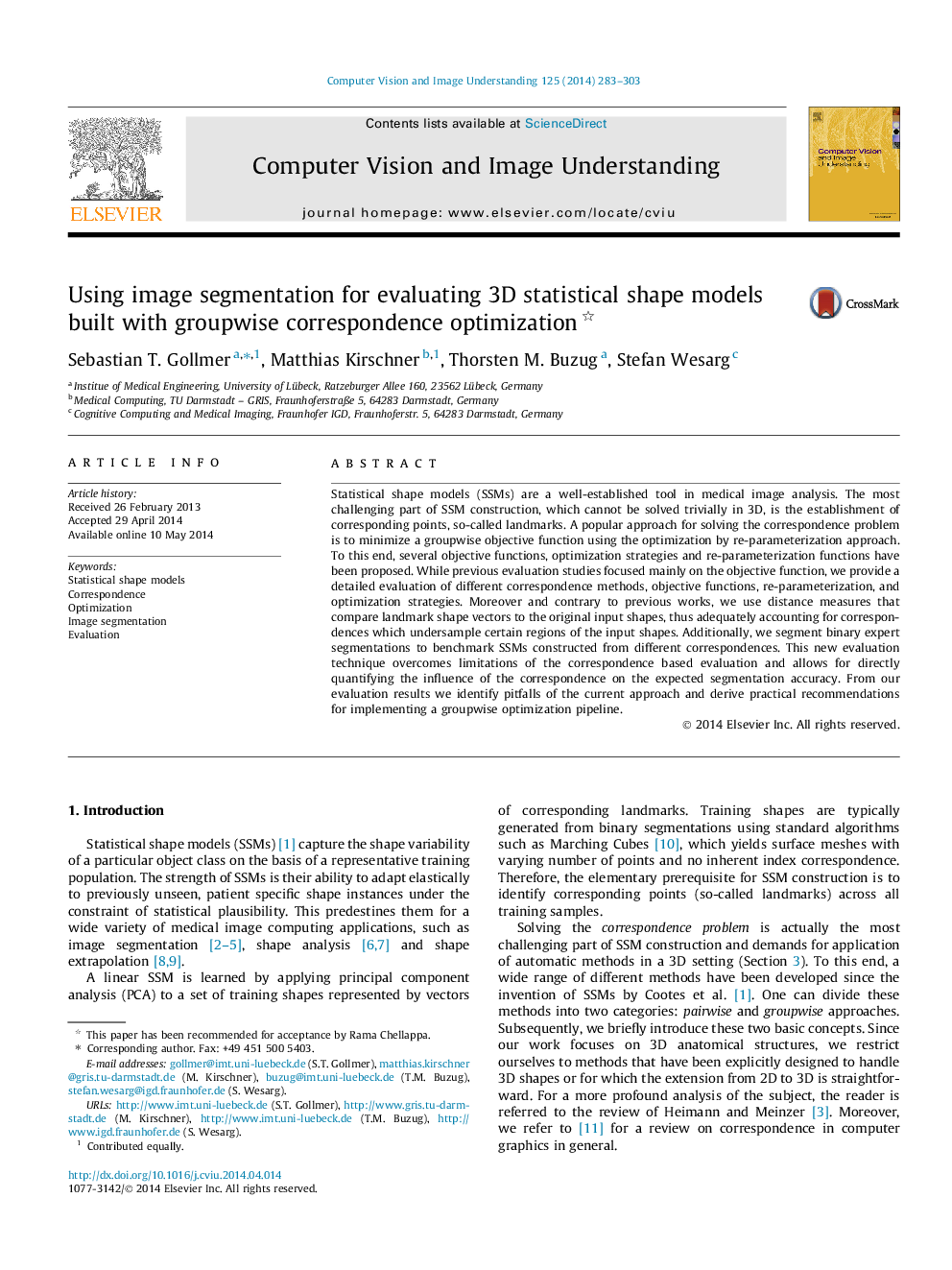| Article ID | Journal | Published Year | Pages | File Type |
|---|---|---|---|---|
| 527598 | Computer Vision and Image Understanding | 2014 | 21 Pages |
•We propose an application-driven approach for evaluating 3D correspondence.•Image segmentation is simulated using SSMs built from different correspondences.•We compare correspondences of different optimization strategies and cost functions.•Comparison with correspondence evaluation reveals limitations of that approach.•Using various distance measures and data set we derive practical recommendations.
Statistical shape models (SSMs) are a well-established tool in medical image analysis. The most challenging part of SSM construction, which cannot be solved trivially in 3D, is the establishment of corresponding points, so-called landmarks. A popular approach for solving the correspondence problem is to minimize a groupwise objective function using the optimization by re-parameterization approach. To this end, several objective functions, optimization strategies and re-parameterization functions have been proposed. While previous evaluation studies focused mainly on the objective function, we provide a detailed evaluation of different correspondence methods, objective functions, re-parameterization, and optimization strategies. Moreover and contrary to previous works, we use distance measures that compare landmark shape vectors to the original input shapes, thus adequately accounting for correspondences which undersample certain regions of the input shapes. Additionally, we segment binary expert segmentations to benchmark SSMs constructed from different correspondences. This new evaluation technique overcomes limitations of the correspondence based evaluation and allows for directly quantifying the influence of the correspondence on the expected segmentation accuracy. From our evaluation results we identify pitfalls of the current approach and derive practical recommendations for implementing a groupwise optimization pipeline.
Graphical AbstractFigure optionsDownload full-size imageDownload high-quality image (245 K)Download as PowerPoint slide
